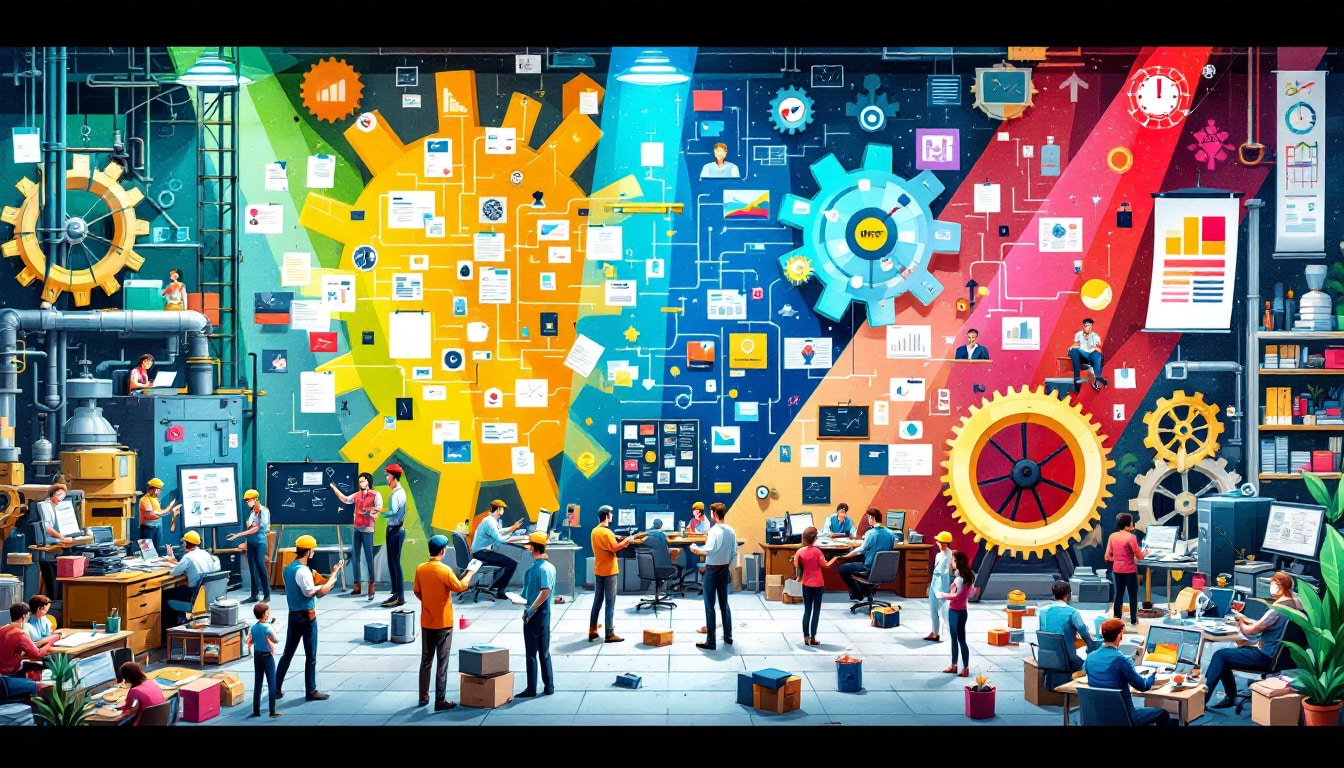The Mind Mapping, as a powerful visualization tool, acts as a catalyst for innovation within companies. By transforming disorganized ideas into a clear and dynamic structure, it facilitates collective creativity and enhances communication among teams. Through this method, barriers to innovation, such as information overload or difficulties in prioritization, turn into opportunities for enriched strategic thinking. Thus, Mind Mapping becomes the essential ally for navigating toward new horizons of opportunities and success.
🔥 Nous recommandons Ideamap
Ideamap est l’outil idéal pour un brainstorming ou un projet collaboratif. Grâce son interface facile et à ses fonctions IA, Ideamap booste votre créativité tout en favorisant une meilleure organisation de vos idées pour atteindre vos objectifs.

The Mind Mapping, also known as a mental map, is a powerful tool that allows visually representing ideas and information. In business, this tool is essential for fostering innovation and improving collaboration among teams. By structuring thoughts graphically, Mind Mapping facilitates understanding and sharing ideas, which is crucial in dynamic work environments.
One of the main reasons why Mind Mapping encourages innovation is its ability to organize complex thoughts effectively. Companies often face a multitude of information that, if not well organized, can lead to cognitive overload and hinder decision-making. Thanks to mental maps, teams can visualize concepts, ideas, and issues clearly. This allows for identifying links between different pieces of information and more swiftly spotting innovation opportunities.
Mind Mapping also reduces barriers to creativity. By encouraging participants to express themselves graphically, it unleashes creative thinking that could otherwise be inhibited during traditional discussions. Visual diagrams stimulate idea associations, making exchanges richer and more diverse. This contributes to an environment where everyone feels comfortable sharing their ideas, thereby fostering collective innovation.
Another advantage of Mind Mapping is that it simplifies the prioritization of tasks and projects. In the age of Big Data, companies must constantly evaluate and adjust their priorities. Mental maps help prioritize ideas by highlighting critical points and providing an overview of what needs to be done first. This allows teams to focus on initiatives that will bring the most value and impact, thus maximizing chances of success.
Furthermore, Mind Mapping improves communication within teams. Mental maps serve as a visual reference during meetings, helping keep all team members on the same page. This reduces the risk of misunderstandings and ensures that everyone shares a common understanding of the objectives to be achieved. Effective communication is fundamental to the innovation process as it enables team members to align on a shared vision and collaborate more harmoniously.
Additionally, mental maps can be used to analyze the competitive environment and the market. By integrating analytical methods such as PESTEL or SWOT directly into mental maps, teams can quickly visualize the strengths and threats surrounding their industry. This visual analysis allows companies to better understand their position and identify innovative strategies suited to their objectives.
Finally, Mind Mapping becomes a real springboard for continuous learning. It allows employees to document their thoughts and track their progress over time. By revisiting and refining their mental maps, teams can learn from past projects, promote knowledge sharing, and cultivate a culture of innovation within the company.

FAQ about Mind Mapping and Innovation in Business
Q: What is Mind Mapping?
A: Mind Mapping, or mental map, is a visualization tool that allows organizing ideas and information in a structured way. It helps transform abstract concepts into visual representations.
Q: How does Mind Mapping stimulate creativity?
A: By encouraging the visual exploration of ideas, Mind Mapping helps individuals and teams generate unexpected connections, which stimulates creativity and innovation.
Q: Why is Mind Mapping effective for communication?
A: Mental maps allow visualizing key ideas clearly and concisely, thus facilitating communication among team members and ensuring everyone is on the same page.
Q: What is the impact of Mind Mapping on decision-making?
A: By organizing information hierarchically and visually, Mind Mapping helps decision-makers quickly evaluate their options and make informed decisions.
Q: How does Mind Mapping help prioritize tasks?
A: Through its ability to visually represent tasks, Mind Mapping allows distinguishing priorities, which helps manage time and resources effectively.
Q: What are the long-term benefits of Mind Mapping for a business?
A: In the long term, Mind Mapping fosters continuous innovation, helps adapt to market changes, and strengthens collaboration within teams.
Q: Is training necessary to use Mind Mapping?
A: While it is accessible to everyone, training can enrich the experience and enable each user to make the most of Mind Mapping techniques.
Q: What tools can be used to create mental maps?
A: There are several software tools, such as Xmind or Mindomo, that facilitate the creation of mental maps, but paper and pencil can also be very effective.
Q: How does Mind Mapping promote collective innovation?
A: By involving all team members in the creative thinking process, Mind Mapping encourages idea sharing and brings out innovative solutions through collaboration.













